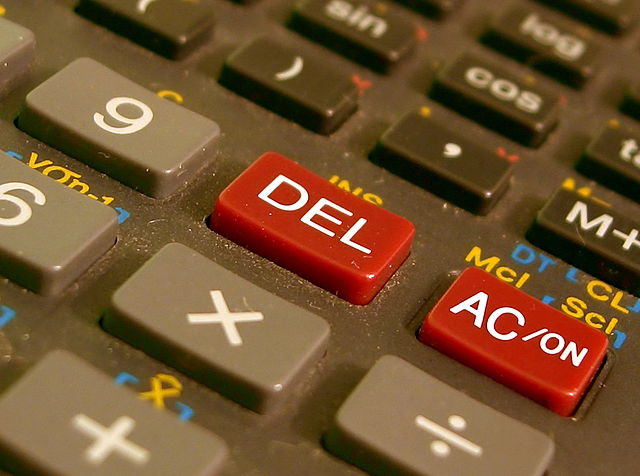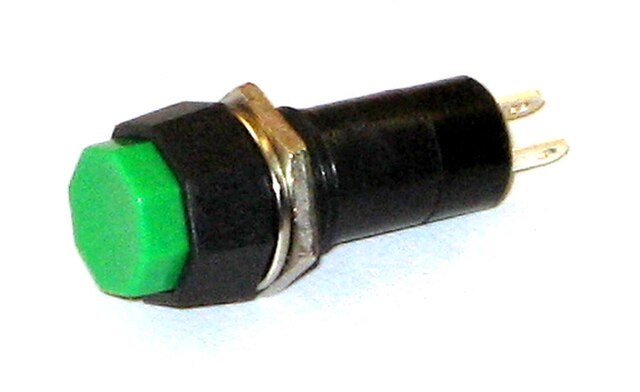A push-button or simply button is a simple switch mechanism to control some aspect of a machine or a process. Buttons are typically made out of hard material, usually plastic or metal. The surface is usually flat or shaped to accommodate the human finger or hand, so as to be easily depressed or pushed. Buttons are most often biased switches, although many un-biased buttons still require a spring to return to their un-pushed state.
Generic arcade game buttons
Buttons on a handheld calculator.
Button shaped as an octagon.
In electrical engineering, a switch is an electrical component that can disconnect or connect the conducting path in an electrical circuit, interrupting the electric current or diverting it from one conductor to another. The most common type of switch is an electromechanical device consisting of one or more sets of movable electrical contacts connected to external circuits. When a pair of contacts is touching current can pass between them, while when the contacts are separated no current can flow.
Electrical switches. Top, left to right: circuit breaker, mercury switch, wafer switch, DIP switch, surface mount switch, reed switch. Bottom, left to right: wall switch (U.S. style), miniature toggle switch, in‑line switch, push-button switch, rocker switch, microswitch.
Three push button switches (Tactile Switches). Major scale is inches.
A toggle switch in the "on" position
Triple-pole single-throw (TPST or 3PST) knife switch used to short the windings of a three‑phase wind turbine for braking purposes. Here the switch is shown in the open position.







